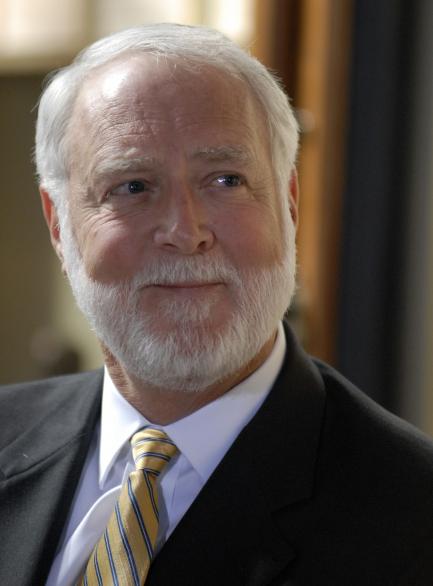Statement: Wayne Clough, Secretary, Smithsonian Institution
The National Portrait Gallery exhibition, “Hide/Seek: Difference and Desire in American Portraiture,” has generated its share of controversy. Some have called for the removal of the entire exhibition because they object to its content, while others have objected to the decision to remove a video from the exhibition by the artist David Wojnarowicz. Throughout it all, the exhibition has continued to serve its purpose. Large audiences have attended and learned about the contributions of gay and lesbian artists to American portraiture and many more will continue to do so.
I enthusiastically supported the Portrait Gallery's plans to host the first major museum exhibition that focused on sexual difference in the making of modern portraiture in America because the exhibition opened a window on the art of the period and illuminated the history of our changing societal norms. The exhibition helps all of us understand American portraiture through the eyes of those artists who were forced to speak to us through code and symbol and who paid a price for doing so. Included are portraits by artists John Singer Sargent, Grant Wood, Andy Warhol, Thomas Eakins and Annie Leibovitz, as well as two other works by Wojnarowicz.
We believed from the beginning, and continue to believe, that our role was to use the power of the Smithsonian’s national visibility to reach the largest possible audience. However, the often sharp discourse of the past month illustrates how the Smithsonian’s mission, if thoughtfully executed, can also place it at the intersection of national debates about cultural transitions. This is not a complaint but an acknowledgment that our role as a publicly supported institution is complex.
More than 15 years ago, a document entitled: E Pluribus Unum: This Divine Paradox, Report of the Commission on the Future of the Smithsonian, summarized these challenges in the following terms:
“Museums in general, and the Smithsonian in particular, are increasingly flash points in the debates that characterize our nation’s transition from a society that depends for coherence on a single accepted set of values and practices to one that derives its strength and unity from a deep tolerance of diversity. This happens because museums … must prepare exhibitions that record and illuminate this transition. This sometimes results in acrimonious and contentious debate… [The Smithsonian’s] position is especially challenging because it is a national institution with large and complex collections and missions.”
These words still hold true. For 164 years, the Smithsonian has provided visitors from across the nation and around the world with an opportunity to learn about the American experience. We sit on the National Mall, the nation’s front porch, and we benefit from the support of its 300 million citizens. Together they represent all facets of the American story, each part of which deserves to be told in a way that exposes people to our history, as well as presents new ways of looking at the world.
In early December, after consultation with the Portrait Gallery director and curator and the Under Secretary of History, Art, and Culture, I made the decision to take a video work out of “Hide/Seek: Difference and Desire in American Portraiture.” I did this because it is my responsibility as Secretary to take actions that are needed to sustain the long-term strength of an institution I care deeply about and to allow it to continue to serve its important educational mission. I also still believe this decision was the best option for ensuring the exhibition remained open through the completion of its scheduled run.
During the past few weeks, I have heard from and reached out to many thoughtful people regarding this decision. I respect and appreciate the opinions and advice they have shared with me, particularly with respect to how the Smithsonian communicates and consults on important issues. I am committed to improving these processes so that this Institution can meet the challenges of its public mission, including our role in educating about complex topics that involve social transitions or incorporate, in art or objects, cultural or religious symbols.
These are not subjects of easy consensus, but if anything is to be learned from the events of the past month, we must continue to encourage discussion. In the near future, we will hold a forum with key constituencies and the public to continue the dialogue these topics deserve. Our focus continues to be deepening knowledge of art, science, history and culture, and sustaining public trust in the Smithsonian as a place to learn and be inspired.
Linda St. Thomas
202-841-2517


